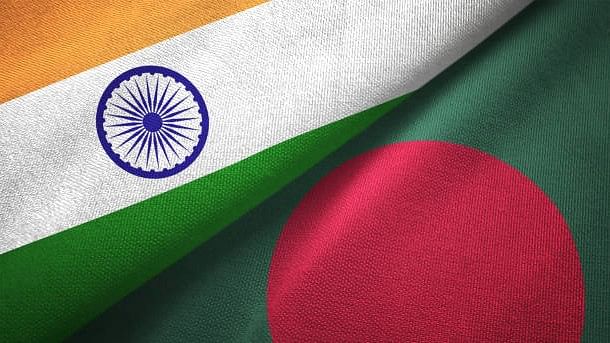
Image for representation.
Credit: iStock Photo
Since former Bangladesh Prime Minister Sheikh Hasina was deposed on September 5, anti-India sentiments have surged among the population, and confrontational statements from functionaries of the interim government have flooded the media. Attacks on minorities have also continued.
These incidents, along with the anti-India rhetoric that often crosses diplomatic boundaries and disregards India’s interests and concerns, are likely to continue under the current dispensation in Bangladesh. Even when an elected government replaces the interim administration, the situation may not improve significantly. In this tense scenario, marked by mutual distrust, India must stay the course and avoid reacting to provocations.
What should India do? First, as time passes, the China factor is likely to further complicate the strained India-Bangladesh relationship. While India-Bangladeshi relations suffer from diverse perceptions within its polity, Sino-Bangladeshi ties enjoy a relative congeniality. The average Bangladeshi views China as a favourably disposed country, in contrast to India, which is often perceived as antagonistic.
Thus, in contrast to India, relations with China have garnered bipartisan and widespread political support within the country. Moreover, China gives Bangladesh extra leverage vis-à-vis India. Hence, India will have to factor in China while dealing with Bangladesh, especially on political-economic issues.
In his book Revenge of Geography, Robert Kaplan explains that geography provides a backdrop to human history and is the most fundamental factor in foreign policy of countries as it is permanent. He further makes a compelling comment that geography has not been conquered by technological advances, but its permanence gets forgotten due to the overexuberance generated by new innovations. Therefore, while Bangladesh may have regimes hostile to India’s interests, India will continue to enjoy geographical advantage relative to China in engaging Bangladesh.
Second, we need to accept that continued respect for India’s security concerns by Bangladesh can only be a by-product of a beneficial bilateral relationship, indicating a complex situation where cordial relations are likely to coexist with critical security concerns. In Bangladesh, the distrust emanates from its self-perceived sense of powerlessness at being geographically surrounded by a much larger and more powerful India, as well as because the majority of its surface water flows through India.
It is important to understand these parallel trends to consolidate a sustainable relationship. Relations between the two countries need to be institutionalised rather than based on personalities, so that they build their own momentum, continuity, and permanence.
Third, the Indo-Bangla border continues to be regarded as a symbol of strained relations in Bangladesh. Despite well-intentioned bilateral resolve and recent fragmented remedial measures, deaths and injuries to Bangladeshis at the hands of the Indian border guarding force continue to be a cause for concern in both countries. Such incidents trigger an outrage in Bangladesh, giving rise to antipathy against India and exerting incongruent, unconstructive stimulus on their overall bilateral relationship. While India has adopted a security-dominated approach for border management, Bangladesh tends to follow a more humanitarian and benign philosophy.
This divergence in their uncoordinated and incoherent methodologies for border management has led to a gridlock on the border, perpetuating the status quo and blocking any substantial refinements. A harmonised joint border management policy between India and Bangladesh, infusing political determination, is an imperative.
Fourth, the importance of economic cooperation in the overall Indo-Bangladesh relations cannot be overemphasised. Bangladesh is India’s largest trade partner in South Asia, and India is the second biggest trade partner of Bangladesh in Asia. Infrastructure linkages to include energy, transport, and communication are three pillars of contemporary development, having local, regional, and global ramifications. India and Bangladesh each have both economic and security dimensions as well. Cooperation of a high degree is required for the creation of trans-border linkages and economic interdependence.
Fifth, Bangladesh has not been able to institutionalise classical and stable civil-military relations despite so many years of democracy. The country continues to still live under the shadow of the military. The principle reason lies in the nature of its politics, which is characterised by deadly confrontations, revenge, and struggle for power by the two major political parties, giving rise to a dysfunctional democratic order with an abysmal record of institution building. Given the nature of civil-military relations in Bangladesh, it would be in India’s interest to expand the scope of military-to-military engagement. This will indirectly act as a barrier to checking and balancing frequent regime-based changes in Bangladesh’s India policy.
Sixth, India needs to improve its image, taking into account people’s perceptions that have partly been shaped by an adversarial discourse in Bangladesh, certain policies, and also its own lackadaisical attitude. As the security concerns between India and Bangladesh are increasingly intertwined, the flow of correct information is of utmost importance. Media in Bangladesh is especially prone to highlighting incidents on the border without verifying the facts, leading to whipping up anti-India sentiments. In such situations, people-to-people interaction becomes important so that they can see for themselves the changed situation on the border.
Wider dissemination of correct information on sensitive issues like water sharing is also imperative. India should also undertake measures to sensitise the Bangladeshi public, especially the new generation, whose knowledge of India’s contribution to the Liberation War is limited to just one sentence in the text books. Therefore, India should invest heavily within Bangladesh in a public information campaign to gradually change perceptions of the common man towards India and bridge the trust deficit.
Finally, our cultural centres in Dhaka, which were ransacked in the recent turmoil, have an important role in the celebration of common cultural linkages between the two countries. They run training programmes like Yoga, Kathak, Manipuri dance, Hindi language, and Hindustani classical music. It is in India’s interest to strengthen the Bengali culture in Bangladesh in order to prevent further rise and dominance of politico-religious entities and anti-India discourse.
(The writer is a former Vice Chief of the Army and attended the National Defence Course in Bangladesh.)